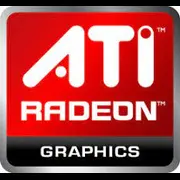ATI FirePro V9800P

ATI FirePro V9800P in 2025: Nostalgia or Relevance?
Professional GPU in the Era of New Technologies
Introduction
In 2025, when the GPU market is overflowing with ray-tracing cards and neural network technologies, the ATI FirePro V9800P seems like a relic of the past. However, this professional graphics card, released by AMD in 2010, still finds use in niche scenarios. Let's explore who can benefit from it today and what compromises need to be accepted.
Architecture and Key Features
TeraScale 2: The Foundation of Stability
The FirePro V9800P is built on the TeraScale 2 architecture, manufactured using a 40nm process. Unlike modern RDNA 4 or Ada Lovelace architectures, it lacks support for RTX, DLSS, or FidelityFX. However, its hallmark is optimization for professional applications and stable Enterprise-class drivers.
Unique Features for Its Time
- Eyefinity: Support for up to 6 displays simultaneously — relevant for surveillance systems or digital signage.
- App Acceleration: Hardware acceleration for OpenCL 1.1 and DirectCompute.
Memory: Endurance vs. Speed
GDDR5: 4 GB for Basic Tasks
The card is equipped with 4 GB of GDDR5 memory with a 256-bit bus. The bandwidth is 147 GB/s. This is insufficient for modern 3D rendering or neural networks, but it is adequate for CAD applications from the 2010s.
Limitations in 2025
- Insufficient capacity for working with 8K textures.
- Low speed compared to GDDR6X (up to 1000 GB/s on the RTX 5080) or HBM3.
Gaming Performance: Retro Gaming
Average FPS in Older Titles (1080p):
- The Witcher 3: ~25 FPS (on low settings).
- GTA V: ~30 FPS (medium settings).
- Modern AAA titles (e.g., Cyberpunk 2077 Phantom Liberty) — less than 15 FPS even at 720p.
Resolution Support:
- 1080p: Acceptable for games up to 2015.
- 4K: Not recommended — lack of memory and computational power.
Ray Tracing: No hardware support.
Professional Tasks: Where It Still Holds Up
3D Modeling and Rendering
- Compatible with AutoCAD 2020, SolidWorks 2019 (newer versions may not be supported).
- Rendering in Blender Cycles (via OpenCL) is 2-3 times slower than the Radeon Pro W7600 (2023).
Video Editing:
- Streaming Full HD editing in Adobe Premiere Pro CC 2021 — without issues.
- 4K or NeRF effects — cannot handle.
Scientific Calculations:
- Support for OpenCL 1.1 limits its use in modern simulations.
- CUDA is not available — this is NVIDIA's ecosystem.
Power Consumption and Thermal Output
TDP 225 W: System Requirements
- Recommended power supply: 600 W (allowing for overhead for other components).
- Cooling system: single-fan turbine. Noise level — up to 42 dB under load.
Build Tips:
- Case with good ventilation (at least 3 fans).
- Avoid compact SFF builds — the card takes up two slots.
Comparison with Competitors
Against Contemporaries (2025):
- NVIDIA RTX A2000 (12 GB): 3 times faster in rendering, supports DLSS 3.5, starting price $600.
- Radeon Pro W7600 (8 GB): Consumes 130 W, OpenCL computation speed is 5 times higher.
Against Peers from Its Time (2010):
- NVIDIA Quadro 5000: Better optimization for CUDA, but worse multi-display configuration.
Practical Tips
Power Supply: At least 600 W with 80+ Bronze certification. Example: Corsair CX650M ($75).
Compatibility:
- Motherboard with PCIe 2.0 x16 (backward compatible with PCIe 4.0/5.0).
- Not suitable for newer processors without Legacy mode UEFI.
Drivers: Use the "Enterprise" branch from AMD (latest version — 2021).
Pros and Cons
Pros:
- Reliability in legacy professional software.
- Support for 6 displays.
- Low secondary market price ($50-80).
Cons:
- No support for modern APIs (DirectX 12 Ultimate, Vulkan 1.3).
- High power consumption.
- Limited compatibility with new software.
Conclusion: Who is the FirePro V9800P Suitable For?
This graphics card is a choice for:
1. Retro PC enthusiasts building systems based on 2010s OS and software.
2. Budget studios using outdated versions of CAD software.
3. Digital signage or information kiosks, where multi-display support is more important than performance.
In 2025, the FirePro V9800P is a specialized tool rather than a universal solution. If you need power for modern tasks, consider the Radeon Pro W7000 series or NVIDIA RTX A4000. But if you value proven stability and work within a "frozen" software environment — this card may still surprise you.
Basic
Memory Specifications
Theoretical Performance
Miscellaneous
Benchmarks
Compared to Other GPU
Share in social media
Or Link To Us
<a href="https://cputronic.com/en/gpu/ati-firepro-v9800p" target="_blank">ATI FirePro V9800P</a>